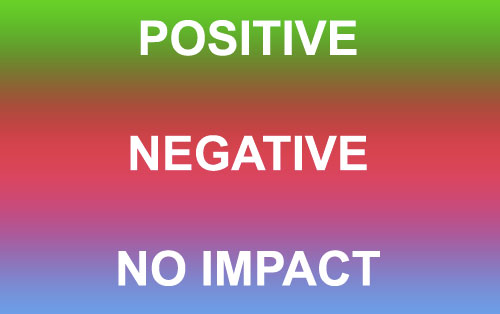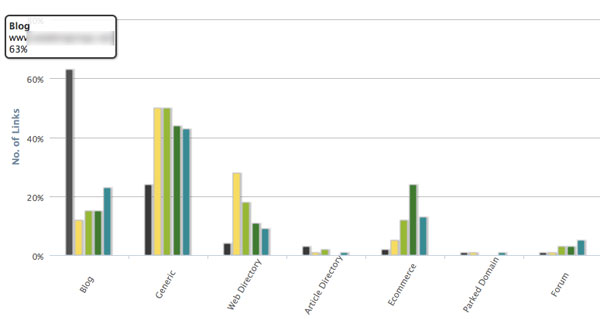The past month has been a painful one for thousands of webmasters hit by the Google Penguin update. If your rankings dipped, no doubt you’ve been faced with a bunch of questions regarding the future of your site and any potential recovery methods that might be available.
After any Google update, be it Panda, Penguin, or any other one, you can fit in one of the following category profiles:

Positive Impact
- You played by Google’s rules and your rankings increased.
- You did some shady link building and got away with it.
Negative Impact
- You played by Google rules and you still got hit … “collateral damage”.
- You did some shady link building.
- You had no idea what link building strategies were used because you outsourced it.
- You are confused by how Google might treat SEO or you might have received bad advice and thought you were playing by Google’s rules … but you weren’t.
No Impact
- Your rankings weren’t affected.
For those who have been negatively impacted, what follows are details about one site that has been hit by the Google Penguin update. This site was guilty of doing some shady link building and had no idea what link building strategies were used due to outsourcing.
I won’t disclose the name of this high profile site in the wedding niche. Also, I’m not affiliated with this site in any way. The data was tracked and benchmarked through cognitiveSEO (disclaimer: I work for cognitiveSEO) to present the case, as a demo, to show how their link building tactics affected their rankings.
A Short Timeline of Events

It all began with their shady link building campaign – one which resulted in:
- Around 60 percent of their links coming from a set of “link networks” and a high range of low quality articles.
- Over optimized “money keywords” anchor text distribution.
- Big discrepancy in “link profile” comparison among all the major competitors in the same niche.
Eventually, a tweak to Google’s algorithm caught them:
- March 25, 2012: Their rankings dipped. (This is prior to the official Google Penguin date … but, in my point of view, Google had been working on this algorithm update since the beginning of this year. You can read on the Google Webmaster Forums a lot of people that complain about the unnatural links warning and rankings dip from the beginning of 2012.)
- April 25, 2012: Their rankings took another dip. (Corresponding with the official “Penguin” update release.)
As of this writing, the website in question isn’t receiving much organic traffic from Google.
Link Building Tactic Dissection

This wedding website used a set of link networks, where low quality content posts were added. The majority of the posts contained one or two links with “money keywords” pointing to their site only. No other external links were found in these articles. These posts were added gradually with a rather normal link velocity.
The second type of low quality and unnatural links were found in weak content articles posted on all kind of sites. They respect the same pattern as the link network blog posts presented before.
The major identifiable pattern is the type of written articles/blog posts and money keywords used. All anchor text was “unnatural” with the sole purpose of driving link juice to the main site and rank it higher. The link building strategy was SEO focused rather than human focused. You can clearly see this in their anchor text distribution:

We can see a totally unnatural brand anchor text distribution. Almost no brand keywords, mistypes navigational keywords, mix of brand and money keywords. It is all optimized for the money keywords.
By the way, this site had a pretty high ratio of the “wedding rings” keyword on its main page that might look like the keyword was over stuffed. The rest of the pages on the site had a pretty natural keyword distribution.
A natural anchor text profile will normally look like this.

When comparing the link profile of this wedding site to their major competitors (major players in the same niche that weren’t affected by the Penguin update) this site had a major discrepancy in their link profile. They were the only one with ~60 percent links coming from low quality blogs. The rest had a similar distribution of links by the site type profiling.

How easy it is to Google to find these kind of anomalies in link profiles? Rather easy it seems, compared to other things they do, that are way more complicated to implement.
Penguin Recovery Methodology
What should this website do to recover?
To begin, they should remove all those “link network” backlinks and low quality article links. While doing this, they should start developing and implementing a creative viral campaign (infographics, videos, etc.) to attract natural links to the site.
Forget traditional SEO for a while. Don’t focus on any “money SEO” at this point – just do it for the sake of visibility and increasing site authority. After building back the lost site authority is when they can focus on the “money keywords” and more traditional SEO.
Removing the majority of their link profile is going to be a really tough task, unless they have direct control over the link networks or can communicate with the owners of the link networks to ask them to remove the links.
Google’s Penguin update was a real hit for thousands of shady SEOs, because removing a link can be even harder than acquiring that link in the first place. It is a concept that could be called “link demolition.”
At least one Penguin recovery has been reported, at the time Penguin 1.1 rolled out late last month. The only difference is that the presented site apparently played by Google rules and still got hit as “collateral damage”. A big piece of their recovery came from removing unnatural links.
Conclusions
Identify Penguin
To do this, you first need to find the anomalies in your link profile compared to your still ranking competitors. After you did this you need to identify low quality links that might have caused the unnatural link update trigger. If you were able to find all these than you have the “cause”. Now you need to find the “recovery method”.
Penguin Recovery
The main recovery methodology (not exactly 100 percent proven yet) is to remove the “unnatural links” and rebuild your authority by building “quality links” (you could go the viral link building way for example – infographics, etc.). After all Penguin might be just an “authority slap”. Rebuild that and remove the links that drag that authority down might be the way to recovery.
If too many “unnatural links” or impossible to remove them … start with a totally new domain and re-build everything. That is the worst case scenario. Either way, it’s going to be a tough job. Even Google’s Distinguished Engineer Matt Cutts said that a domain could be totally dipped by Penguin and a recovery could not be possible in certain situations.
Tell Google About it
Ask (and pray) for a site review from Google, after your unnatural link removal is done. You might even have to wait for the next Penguin update to come in effect to see any improvements.
Future Link Building Strategies
If you’re seeking a medium- to long-term “relationship with Google”, start to think more creatively and forget about the old link building tricks that worked for years. Google is smarter than that. If they still work, it will likely only be for a limited period of time.
Google’s classification algorithms will catch the majority of these tricks. Still, there are some major gaps in their algorithms that can be exploited (you can see some of the most spammed keywords still contain spam pages in the top 10 results).

These pages got here by using the oldest tricks in the SEO industry (just applied with a different flavor):
- Cloaking
- Google bombs (but with a distributed link velocity, and a distribution of low quality links combined with high authority links)
- Hacked sites
- Advanced link networks (that are harder to spot by Google at this point in time … their owners just need to be paranoid enough so that they don’t leave any traces around)
- And other tricks …
Google is always moving forward and advancing, focusing on their own interests and not the interests of the webmasters. They will finally catch these “Made for SEO” sites.






